Marilyn Turk's Blog, page 3
May 22, 2023
The Lighthouse and the Monastery – a story of survival
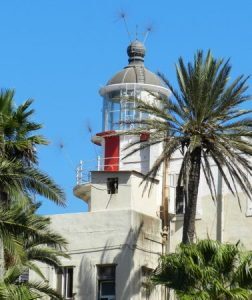
Stella Maris Lighthouse on navy base today
On a recent trip to Israel, our guide took us to what he said was the pinnacle of Mount Carmel where in the Bible (1 Kings 18), God’s prophet Elijah had a confrontation with the prophets of Baal. The guide told us we were on the highest point of the mountain. But looking to my right, I saw an elevated area with a building on it, so I determined to know what the building was. As we were leaving the area, I saw a sign that read Stella Maris Monastery. Further research uncovered more interesting facts about the monastery, leading to my discovery of a lighthouse.
As it turned out, the area had been a Catholic monastery in the 13th century dedicated to the Virgin Mary, also known as Stella Maris, translated “Star of the Sea,” due to its proximity to the Mediterranean Sea. Here on Mount Carmel, the monks were known as Carmelites. When the Crusaders were run out of Jerusalem, the Carmelites also left, spreading across Europe. In 1631, the monks returned and built another monastery near a lighthouse in that location. But in 1761, Zahir al-Umar, an Arab ruler of Galilee, ordered the monastery vacated and destroyed.
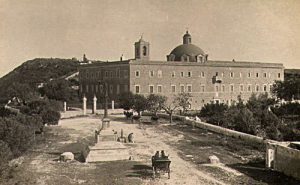
Stella Maris monastery at end of 19th century
The Carmelites then moved to the present location on the mountain, which is directly above the grotto where the prophet Elijah is said to have lived. Here they built a large church and new monastery, first clearing the site of the ruins of a medieval Greek church, known as “the Abbey of St. Margaret” and a chapel, thought to date back to the time of the Byzantine Empire.
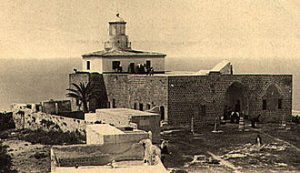
Summer residence of Abdulla Pasha showing lighthouse, 19th century
The new church was heavily damaged during Napoleon’s campaign in 1799, and in 1821, Abdullah Pasha of Acre ordered the monastery to be totally destroyed. He then used the masonry from the church to build a summer palace and a lighthouse on the nearby Mediterranean Sea. In 1836, the property was sold back to the Carmelite order who once again built a monastery on Mt. Carmel.

Stella Maris Monastery today
The lighthouse was rebuilt in 1928, and the property was rented from the Carmelites by the British until the end of the British Mandate in 1948. The property has been occupied by the Israeli Navy ever since, and the Stella Maris Lighthouse on its grounds is still an active aid to navigation.
The light shines in the darkness, and the darkness has not overcome it. John 1:5
The post The Lighthouse and the Monastery – a story of survival appeared first on Pathways of the Heart.
May 19, 2023
How to Find the Story

So you went to a writers’ conference where instructors told you how to write.
They gave tips about what to do and what not to do. But what they didn’t tell you is what to write about.
For some people, the answer is simple. There’s a story that’s been burning in your heart a long time and you just need to get it out. For others, though, the desire to write is present, but the subject is vague.
So first, you need to know if you’re going to write fiction, where the characters and story is a figment of your imagination. Or nonfiction – just the facts, ma’am.
Nonfiction is based on facts, studies, personal history, devotions, or Bible studies. For those, your research must be accurate.
 But fiction requires a different brain set. You want to tell a story, but not sure how to create one. Some people think of the story line first. For example, rich girl meets poor man, their lives are too different and far apart for them to ever be romantically involved. But in the end they will be together after dealing with hurdles along the way, some of their own making, some put there by others.
But fiction requires a different brain set. You want to tell a story, but not sure how to create one. Some people think of the story line first. For example, rich girl meets poor man, their lives are too different and far apart for them to ever be romantically involved. But in the end they will be together after dealing with hurdles along the way, some of their own making, some put there by others.
Or you can see a person or picture of a person and decide that person has a story you want to tell. So you must learn about this character, who else is in her life, what she wants or needs and how she’s going to get it after trying and failing along the way.
Some authors choose a setting, then “see” the characters who are in the setting and what their story is.
For historical authors like myself, I choose a setting where something significant happened in history, and how my characters dealt with it. So in my book, The Escape Game, the setting is World War !!. There is something created during a specific time during the war which impacts the lives of others, so my characters are those others. How’s that for vague? I do want you to read the book, you know. And although the story itself is fictional as are the characters, the historical setting and events must be authentic.
So which way is right – choosing the story first, the people first, or the setting first? It depends on what works best for you, what makes sense to you. No matter how you formulate your story, you will need to know your characters. You need to ask “what if?” to move your story along, and you need to know where it takes place.
“Whatever you do, work at it with all your heart, as working for the Lord, not for human masters” Colossians 3:23 (NIV)
The post How to Find the Story appeared first on Pathways of the Heart.
April 8, 2023
Lighthouses in the UK during WWII
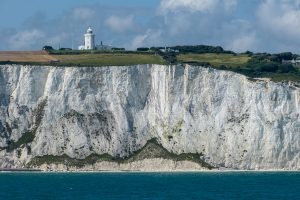
South Foreland Lighthouse, Dover Cliffs by archangel 12, Flickreviewr
Due to my affinity for lighthouses, readers expect to find a lighthouse in my books. Sometimes the lighthouse is the main setting, other times it’s just mentioned and may be missed unless searched for. As a result, looking for the lighthouse in the story can be like the game, “Where’s Waldo?”
My book, The Escape Game, is set in World War II in both England and a POW camp in Germany. The male protagonist is a Spitfire fighter pilot flying bombing missions out of England and over the English Channel to parts of Europe. As a result, he has the opportunity to see many lighthouses from the air, also sitting ducks to enemy planes flying over England.
The South Foreland Lighthouse above the cliffs of Dover is the one mentioned in the book. It was the first electric-operated lighthouse in the world. Although South Foreland itself was not bombed, the town of Dover to its south received heavy bombardment due to its harbor.
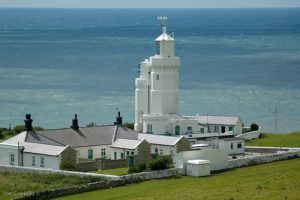
St. Catherine’s Lighthouse
During the war, some of the lighthouses were completely extinguished so the enemy could not use them for navigation. Others, however, were simply dimmed to aid Britain’s merchants and fighting ships. Some lighthouses were even painted with camouflage paint.

South Fair Isle Lighthouse
St. Catherine’s Lighthouse on the southernmost tip of England was bombed in 1943, killing three lighthouse keepers. The South Fair Isle Lighthouse in southwest England was the most damaged lighthouse, bombed twice during the war. The first time was in a December 1941 attack which killed the wife of an assistant lightkeeper. Six weeks later in January 1942, the lighthouse was hit again, this time killing the wife and daughter of the principal keeper.
Sometimes being a beacon of light makes one more vulnerable to attack, as evil always seeks to destroy what is good. Jesus called believers to be beacons of light. As such, we stand out to help guide others, which makes us a target to those who oppose our beliefs. The Bible says evil fears the light because it reveals their wrongs. However, in the end, the eternal light of God will overcome the darkness. Became Christ overcame death.
I once heard someone ask, “Do you brighten a room by entering it or leaving it?” I hope I am the former.
“The light shines in the darkness and the darkness has not overcome it.” John 1:5
The post Lighthouses in the UK during WWII appeared first on Pathways of the Heart.
January 27, 2023
Where’s the Alligator?

Alligator Reef, photo courtesy lighthousefriends.com
What’s your first thought when you hear of a place called “Alligator Reef?” A reef crawling with creepy reptiles with giant teeth and powerful jaws? So naturally, a lighthouse named “Alligator Reef Lighthouse” would be set right in the middle of all those gators, right? Pity the poor lighthouse keeper who had to get through the creatures to reach the mainland!
However, the name had another origin. Back in the late 1800s, a series of reef lights were built off the coast of Florida under the directions of then Lieutenant George Meade of the U.S. Army Corps of Engineers. When it came time to build the third lighthouse in 1873, situated four nautical miles off the coast of Islamorada, Florida, the 136-foot structure was named for the notorious reef it was built to warn mariners about.
Alligator Reef received its name from the Navy schooner USS Alligator, launched in 1820. Why christen a ship with the name “alligator’? Apparently, the initial design of the ship had oars which stuck out on each side and looked like little legs, like an alligator’s. Later, the clumsy oars were replaced by a screw propeller turned by hand, however, the original name stuck.
The USS Alligator’s mission was initially to stop slave ships out of the West Indies, since at that time the importing of slaves had become illegal. The next year, the ship’s focus turned toward stopping pirates from capturing ships and holding them for ransom. However, in late 1821, the USS Alligator became stuck on a reef off the coast of Florida. After hailing another ship who rescued the crew, the poor Alligator was set on fire to keep pirates from claiming her. The guilty reef was then named Alligator Reef, in honor of the ship.
Being a lighthouse keeper at Alligator Reef was not without its danger, however. Hurricanes were an annual threat to the area. The worst occurred in 1935 when over 400 people lost their lives in the nearby Keys. The Keeper’s Log from that event reveals that winds over 200 mph destroyed the lens in the tower, washed away the lifesaving boats, and soaked and damaged the keepers’ quarters. The fact that the tower still stood is a testament to the engineering feet of drilling its pilings into coral below.
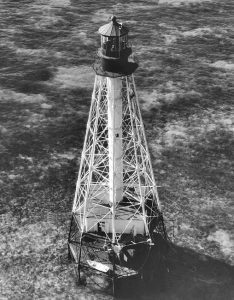
Alligator Reef, 1951, photo courtesy US Coast Guard
Maybe an alligator wouldn’t be so bad by comparison.
The keepers said goodbye to the lighthouse when it was automated in 1963, then the light was deactivated in 2015, its job taken over by a thirty-foot tower topped by an automatic light. The lighthouse is still visible from shore, a destination for boaters, although not open to the public. And alligators are not a problem.
Do you sometimes become afraid of something because it sounds scary, then later you find out you didn’t need to be afraid? There are lots of things in our lives that are like that. But God tells us not to be afraid because He is with us.
Do not fear, for I am with you; Do not be afraid, for I am your God. Isaiah 41:10a
The post Where’s the Alligator? appeared first on Pathways of the Heart.
December 24, 2022
When Santa Lived at Alcatraz
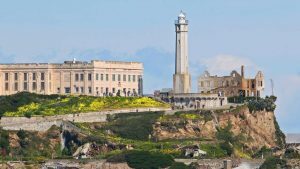
Alcatraz Island and Lighthouse today, photo courtesy NPS
The name “Alcatraz” brings to mind the notorious federal penitentiary from 1934 to 1963, home to noted criminals like Al Capone and Machine Gun Kelly. The prison was considered impossible to escape, with its position on a remote island in the San Francisco Bay. Of the thirty-four attempts made, only one was questionably successful. For those unfortunate people who were sentenced there, it was a place of doom and hopelessness.

Alcatraz Island showing first lighthouse, 1895, photo courtesy lighthousefriends.com
But Alcatraz Island was also the site of the first lighthouse on the west coast of California, built in 1853. From that time until the lighthouse was automated in 1963, the island was home to its lighthouse keepers and their families. When the existing military fort turned army barracks was converted to the federal prison, the lighthouse families lived alongside prison guards and their families.

Keeper Ed Schneider as Santa, photo courtesy Lighthouse Digest
In 1931, jovial and heavyset Edward H. Schneider was appointed assistant keeper at Alcatraz Lighthouse. Not so coincidentally, Santa arrived at the island the next Christmas, bringing joy to the children of the keepers as well as those of the prison guards. Schneider’s daughter Jacquelyn, fondly remembered her life on the island, comparing it to growing up in a small town, complete with its own Santa Claus who happened to be her father. Schneider served at the lighthouse for 28 years, retiring when the lighthouse was automated in 1963.
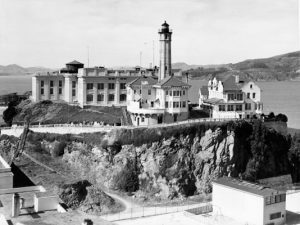
Alcatraz Isaland and Lighthouse, photo courtesy San Francisco Public Library.
One might think Alcatraz Island would be a dismal place to spend Christmas. But Ed Schneider showed how Christmas joy can exist anywhere when you share your joy with others.
At Christmas, we celebrate the birth of Christ and the joy He brought into a dark world. Will you share that joy today?
But the angel said to them, “Do not be afraid. I bring you good news that will cause great joy for all the people.” Luke 2:10
Merry Christmas!
*Story courtesy Lighthouse Digest.
The post When Santa Lived at Alcatraz appeared first on Pathways of the Heart.
November 19, 2022
Birdcages and Lighthouses
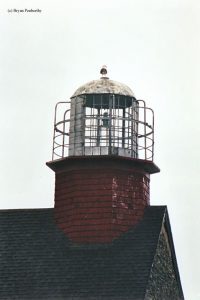
Birdcage Lantern
What does Baileys Harbor Light in Wisconsin, Selkirk Light in New York, Prudence Island Light in Rhode Island, and the Old Cape Henry Light in Virginia have in common?
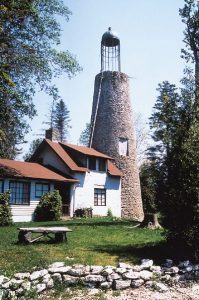
Bailey’s Harbor Light, Wisconsin

Selkirk Light, New York
In addition to all being lighthouses, they are capped by what is traditionally referred to as birdcage lanterns. These lanterns were so named because they resembled wire birdcages. These lighthouses also represent some of the oldest lighthouses in the United States, their birdcage lanterns common to most lighthouses built before 1852.
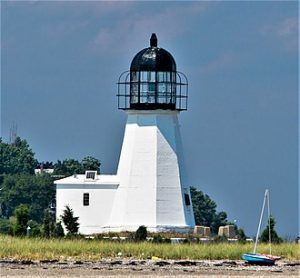
Prudence Island Light, Rhode Island
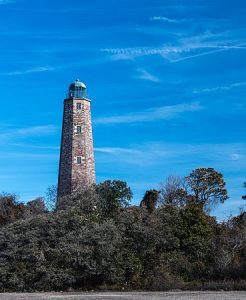
Old Cape Henry Light, Virginia
However, when the Fresnel lens was introduced, most of the birdcage lanterns were replaced, unable to support the new style lens. Today only these four still exist, and all but the Bailey’s Harbor Light are still active aids to navigation since the US Coast Guard replaced their Fresnel lenses with smaller automated lights. Even the 1792 Old Cape Henry, the first lighthouse commissioned by the US Federal Government, is still in use today.
Ecclesiastes 3:1 “There is a time for everything, and a season for every activity under the heavens:”
The post Birdcages and Lighthouses appeared first on Pathways of the Heart.
November 18, 2022
Writing is a Team Effort, Thank God!
The common perception of writers is that they are isolated from the world, tucked away in a corner or small space with little to no human contact.
Perhaps that used to be the way it was. But these days with the internet, social media, and the ability to travel more easily, writers spend less time alone. Sometimes a writer feels all alone while their minds go to places outside of their current surroundings, however, the truth is, we are not alone and don’t need to be.
I used to think no one understood me and my feelings and thoughts about writing. But I was so wrong. First of all, almost every other writer has had the same feelings and thoughts. For that reason, we should spend time with other writers either via email or in groups with other writers, whether in critique groups or at conferences. As Christian writers, we support each other and encourage each other. We aren’t out to steal ideas or bash our fellow writer’s work. We are a team who has felt the godly call on their lives to write, therefore we are not competitors.
Another place I’ve learned to appreciate a team is in publishing a book. Whether indie publishing or traditional publishing, there has to be a team of sorts—people who edit or help with the process. In larger traditional publishing houses, there are bigger teams—agents, more editors, marketing people and salespeople.
The team concept was created by God, who saw early on that it was not good for man to be alone. Also, in Ecclesiastes 4: 9-10, it says, “Two are better than one, because they have a good return for their labor: If either of them falls down, one can help the other up.”
And in the New Testament, we see that Jesus had a team of twelve disciples that he sent out in smaller teams of two.
In Hebrews, we are told, “And let us consider how we may spur one another on toward love and good deeds, not giving up meeting together, as some are in the habit of doing, but encouraging one another—and all the more as you see the Day approaching.”
So if you’re a writer, don’t believe the lie that you are alone on this journey. God is with you, and so are a multitude of other writers. Perhaps you need to reach out and find them.
Are you a writer who feels alone? Do you need help finding other writers? Let me know if I can help you find them.
May God Bless You and your Writing!
The post Writing is a Team Effort, Thank God! appeared first on Pathways of the Heart.
January 2, 2022
Looking for a brighter year ahead
May your 2022 be a year filled with blessings!
The post Looking for a brighter year ahead appeared first on Pathways of the Heart.
December 25, 2021
The Christmas Lights of Thacher Island
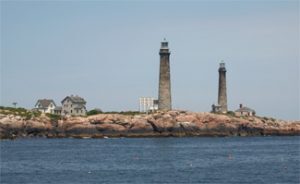
Thacher Island Twin Lights, photo courtesy Lighthousefrinds.com
In 1864, a few days before Christmas, Maria Bray, wife of head lighthouse keeper of the Thacher Island Twin Lights, Alexander Bray, was in the keeper’s house, planning for the special day. She thought about what she’d prepare for Christmas dinner while she knitted a pair of socks for her fourteen-year-old nephew Sidney who was staying with them. The boy sure needed some warm socks. She’d darned his other pair, but they were beyond darning anymore. She wished she could do more for Sidney, but times were tough, and he seemed to appreciate whatever was done for him.
He’d eagerly followed her husband around, wanting to learn how to help maintain the twin lights at the island. Even though there were three keepers, having two lighthouses to maintain on opposite ends of the island was quite a chore, especially when the weather turned against them, and the foghorn had to be sounded as well. Maria glanced out the window and frowned at the sight of the dark clouds. More snow was undoubtedly on its way. As she looked, she saw Sidney running toward the house. She quickly stashed her project in the knitting basket and stood as Sidney burst through the door.
“What is it, Sidney?”
Red-faced from the cold, he said, “Mr. Abbott is very sick, burning with a fever! Mr. Bray told me to tell you he and Mr. Carter have to leave right away to take him to a doctor on the mainland.” Sidney paused to catch his breath. “Mr. Bray said they’d be back as soon as they safely delivered Mr. Abbott.”
“All right, then. Thank you for telling me. Now get those wet clothes off and dry yourself by the fire.” She reached for his coat and hat as he shed them, then hung them by the back door. “Come get some hot tea. We can’t have you getting sick too.”
Maria stole another look out the window and said a silent prayer for the safety of Alexander and the others during their trip to the mainland. Although the men had rowed across the bay many times before, one never knew when the waves would act up and make the journey difficult and dangerous. Even the most seaworthy had lost the battle against the treacherous sea. For now, though, she was in charge of the lighthouses until the men returned. She went about her chores, watching the time on the grandfather clock as well as the weather. As the afternoon wore on, she jumped into action.
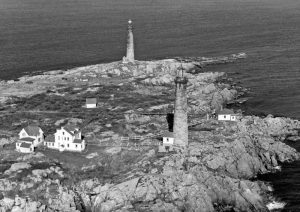
Thacher Island, photo courtesy US Coast Guard
“Sidney, come with me. We must make sure the lights are lit.” Together they trudged across through the snow to one of the towers and climbed the 148 steps to the top, carrying the oil can. In addition to refilling the lantern’s fuel, they trimmed the wicks and cleaned the glass panes of the lantern room. As soon as they finished with one light, they went back downstairs, crossed over to the other lighthouse and repeated the process. A heavy blizzard descended upon the island with fierce winds and blinding snow, making their chore more difficult. There was no doubt the men wouldn’t return in such a storm.
Maria and Sidney rested a short time before they had to return to check on the lights. After the second trip, Sidney fell asleep on the sofa. Maria decided to let him rest as she went back once more to make sure the lights had not gone out. Hopefully, the weather would break tomorrow and the men could come home. However, the blizzard continued, preventing a return trip. For two long days and nights, Maria worked non-stop to keep the lights burning. In the wee hours of Christmas morning, she collapsed into bed, thankful the snow had quit falling.
As the storm broke, Alexander decided to row back to the island. But on the way, the storm returned, tossing the skiff in the waves like a toy. The men lost their bearings and didn’t know which direction to go. Praying for guidance, Alexander saw the faint glow of two familiar lights. The pulled the oars with all their might, finally reaching the icy ramp or the island where they pulled the boat ashore. Alexander hurried home and found Maria sound asleep.
“Merry Christmas, Maria,” he said.
At the sound of his voice, Maria opened her eyes. “Are the lights still burning?” she asked.
“If they were not, my dear, I would not be here,” he said.
Merry Christmas to all and remember to keep your light burning.
In the same way, let your light shine before others, that they may see your good deeds and glorify your Father in heaven. Matthew 5:16
The post The Christmas Lights of Thacher Island appeared first on Pathways of the Heart.
September 20, 2021
A Little Writing Humor
Writing can be stressful. But it can also be fun. Sometimes, you just need to laugh.
People have been trying to communicate since life began on this planet. 
Snoopy understood the life of a writer. 
And then there’s editing.
And there’s wishing it wasn’t so hard.
The necessary ingredient: coffee (or tea)
And a little help from our friends. 
The post A Little Writing Humor appeared first on Pathways of the Heart.









